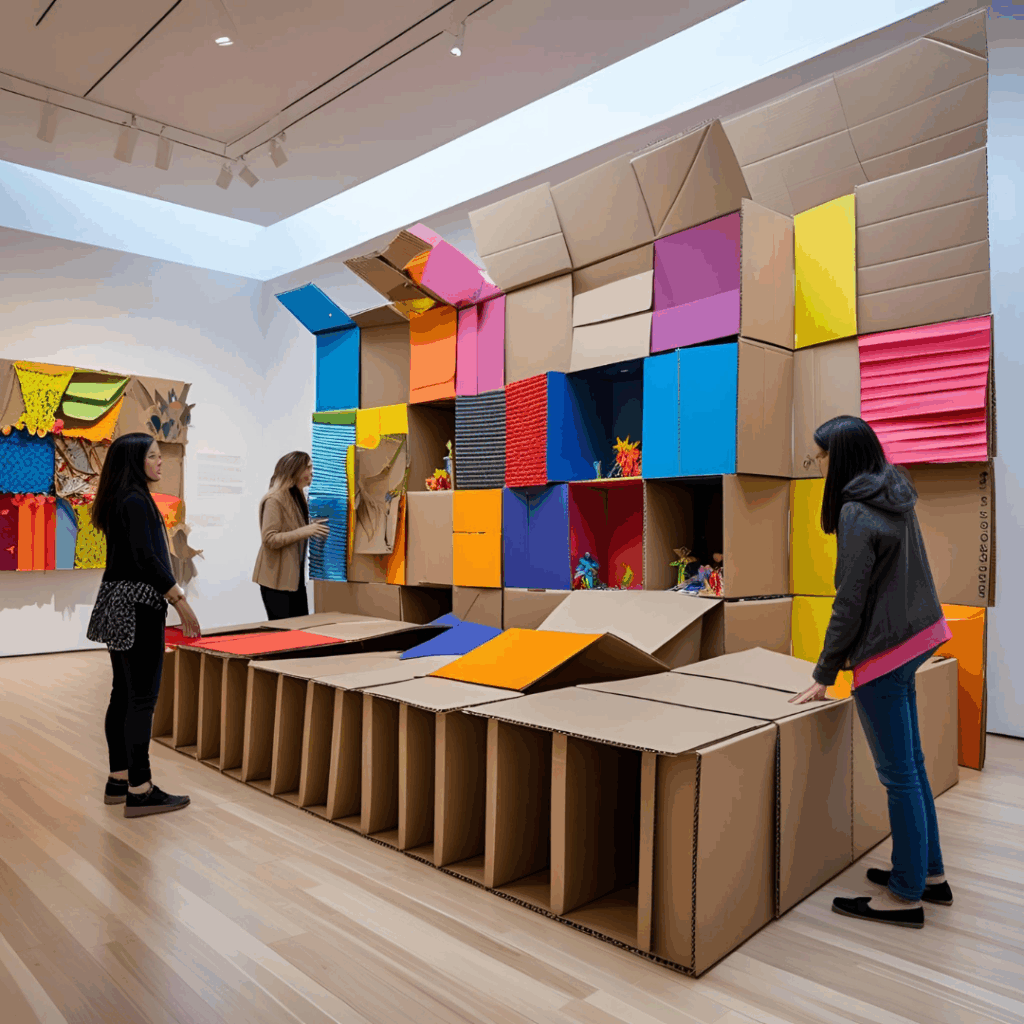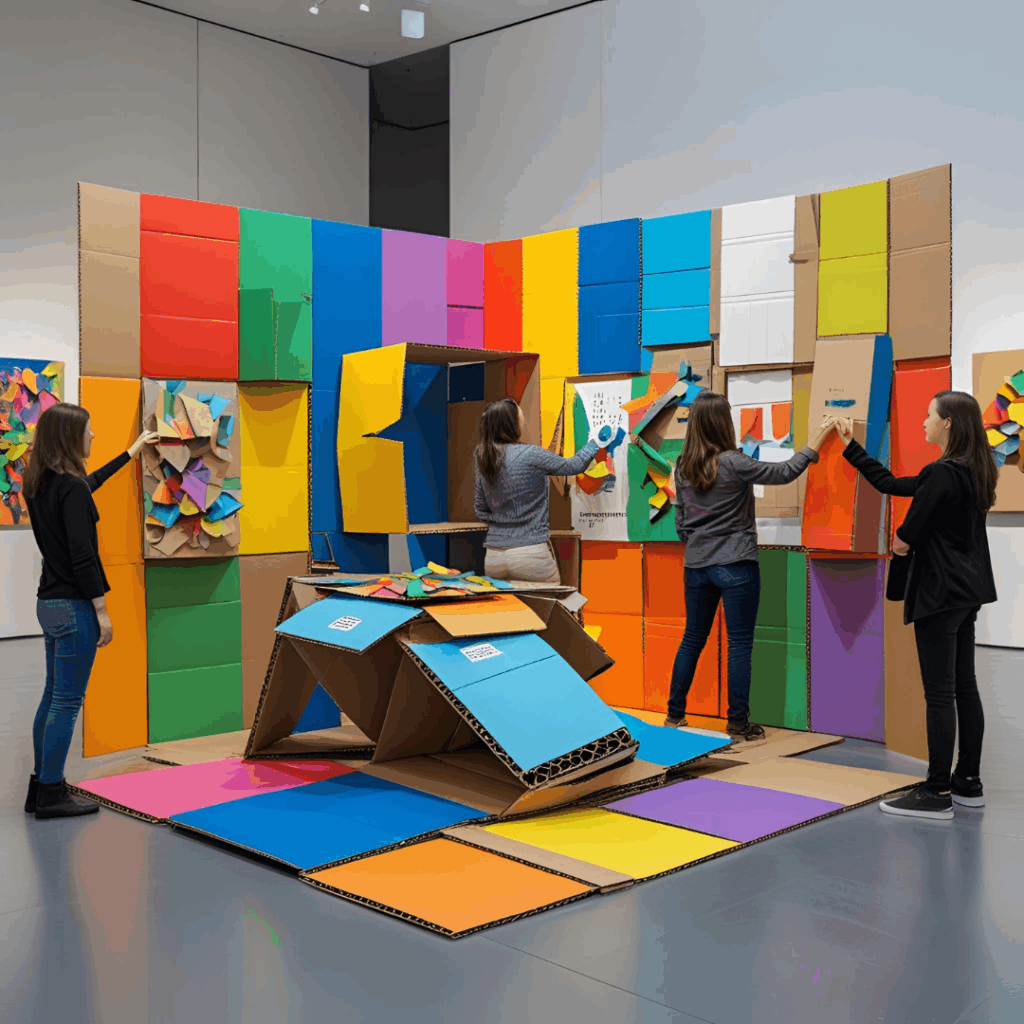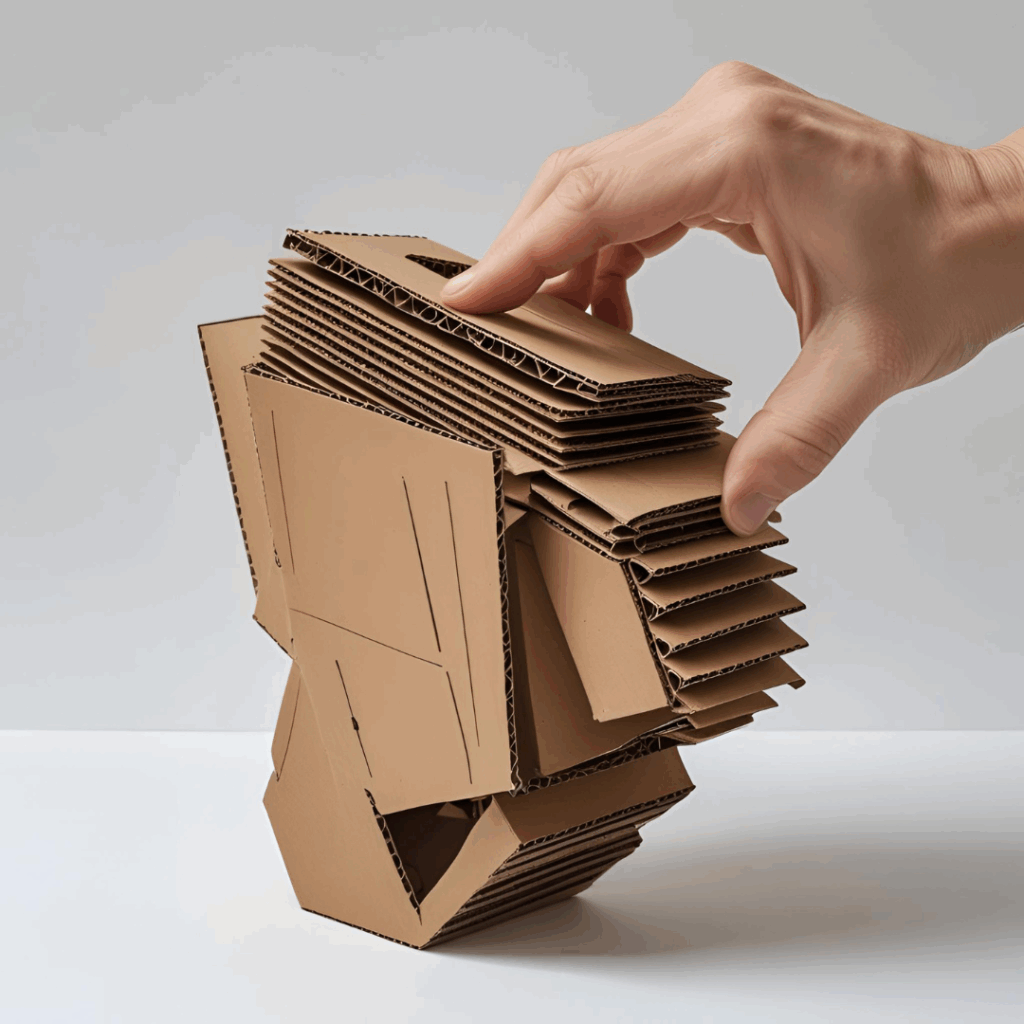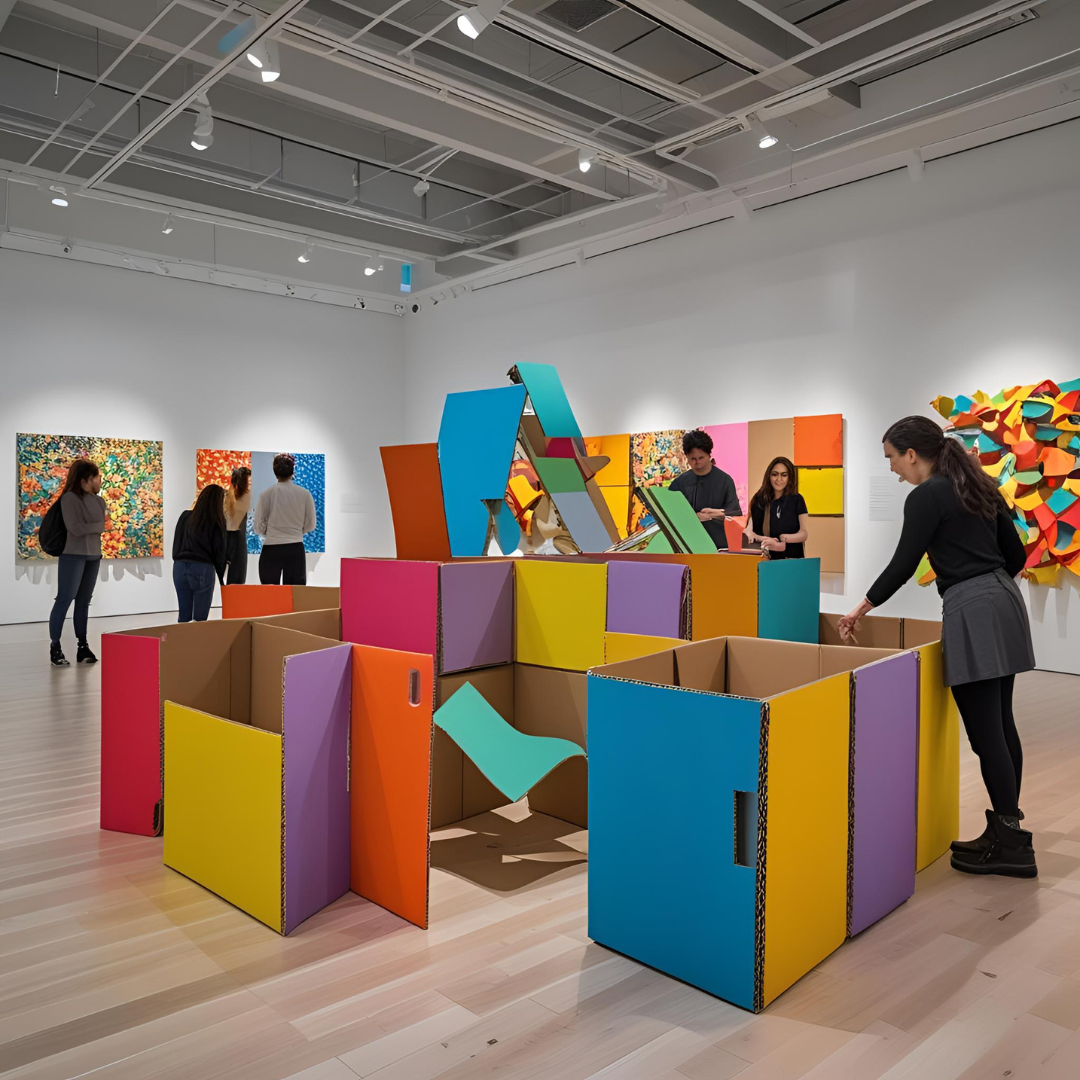The search for sustainable and creative solutions is shaping the way we live, consume, and express ourselves. In this context, cardboard stands out as a versatile, eco-friendly, and accessible material that has gained space in various sectors — from contemporary art to interior design, including educational and community projects. What was once just disposable packaging is now transformed into sculptures, furniture, educational toys, and impactful social actions.
Ecological Benefits of Reusing Cardboard
One of the main reasons why cardboard is trending is its strong contribution to sustainability. It is often made from recycled fibers, is biodegradable, recyclable, and has a low environmental production cost.
Reduction of Solid Waste
By choosing to reuse cardboard instead of discarding it, we prevent tons of waste from piling up in landfills. Cardboard takes an average of just two months to decompose completely in nature — a huge contrast compared to plastic, which can take up to 400 years.
Circular Economy in Practice
Cardboard is a clear example of how the circular economy works. It can be reused multiple times before being recycled, taking on different roles throughout its lifecycle. From shipping boxes to becoming art or furniture, cardboard reinforces the idea of continuous repurposing.
Low Carbon Footprint
Cardboard production, especially when using recycled materials, consumes less energy and emits less CO₂ than the production of other materials. This helps mitigate the negative environmental impacts of traditional industries.


Comparing Cardboard to Other Materials
To understand the true potential of cardboard, it’s essential to compare it to materials traditionally used in manufacturing and art, such as plastic and wood.
Cardboard vs. Plastic
- Sustainability: Cardboard is biodegradable and recyclable, whereas plastic has a long decomposition time and low effective recycling rates.
- Toxicity: Cardboard doesn’t release toxins as it decomposes, unlike many types of plastic that can pollute soil and water.
- Cost: Cardboard is generally cheaper and more accessible, especially for large-scale or educational projects.
Cardboard vs. Wood
- Environmental impact: Wood production often involves deforestation, even when managed. Cardboard, on the other hand, can be made from recycled materials without harming forests.
- Mobility and Lightness: Cardboard is lightweight and easy to transport, making it ideal for art installations and modular furniture.
- Versatility: Although wood is more durable, cardboard can be reinforced and creatively shaped for a wide range of structural purposes.
Cardboard in Contemporary Art and Social Design
Artists and designers worldwide are using cardboard to challenge aesthetic norms, address social issues, and create low-impact environmental solutions.
Accessible Art and Social Commentary
The use of cardboard in art installations allows for a new form of expression: accessible, critical, and democratic. Works created with this material often explore themes such as overconsumption, poverty, housing, and inequality. The lightness and flexibility of cardboard support the work of independent artists, social collectives, and urban movements.
A great example is the use of cardboard in temporary sculptures, interactive exhibitions, and street art. Besides generating less waste after events, these works often invite audiences to reflect on consumer cycles and unconscious disposal habits.
Sustainable and Functional Design
Cardboard has also entered the design world, especially in proposals focused on sustainable furniture. Chairs, tables, shelves, and room dividers made of reinforced cardboard offer surprising strength along with a modern, eco-friendly look.
Many designers embrace this material to create modular, temporary spaces ideal for trade shows, exhibitions, corporate events, or children’s play areas. Another benefit is customizability — cardboard can be cut, folded, painted, and adapted in countless ways.


How This Practice Can Inspire Schools, Businesses, and Communities
The reuse of cardboard goes beyond art and design. It plays an important role in environmental education, social inclusion, and the stimulation of collective creativity.
Purposeful Education
Schools can use cardboard in hands-on activities to teach about sustainability, recycling, and innovation. Workshops that involve making toys, theater sets, or even classroom furniture from cardboard enhance students’ logical thinking, motor skills, and environmental awareness.
Moreover, involving children in creative processes with recyclable materials promotes a DIY (do-it-yourself) mindset and values resourcefulness.
Social Projects and Income Generation
Communities and institutions can turn cardboard into a source of income. Creating cooperatives for handicrafts or eco-friendly furniture is a viable path to social inclusion and poverty reduction.
Initial investment is low, and the results can be significant. Besides generating employment, these projects strengthen a sense of belonging and encourage collective action for social transformation.
ESG-Aligned Companies
Businesses that adopt sustainable practices stand out in the market and show real commitment to the environment and society. Using cardboard in packaging, promotional displays, office furniture, or internal events is a simple yet impactful move.
Companies that involve employees in creative cardboard workshops, for example, promote an organizational culture of innovation and respect for the planet.
Practical Ideas to Use Cardboard Creatively and Sustainably
- Modular sculptures for events or exhibitions
- Educational toys for preschools and schools
- Temporary beds for shelters or field hospitals
- Reusable packaging for e-commerce
- Eco-friendly décor for parties or shop windows
- Room dividers for shared spaces
- Custom furniture for small businesses or coworking areas
Frequently Asked Questions (FAQ)
Is cardboard really strong enough for furniture?
Yes. When properly designed and structured with smart techniques (such as strategic folds or honeycomb interiors), cardboard can support hundreds of pounds, making it ideal for temporary and sustainable furniture.
Doesn’t using cardboard in art devalue the work?
Not at all. Many renowned artists use recyclable materials to enhance their messages and innovate visually. The value of art lies in creativity and concept — not the price of the materials.
What is the environmental impact of using more cardboard?
When sourced from recycled materials, using cardboard reduces the consumption of natural resources, saves energy, and prevents waste generation. It supports the circular economy and lowers ecological footprints.
Can cardboard replace plastic in packaging?
Yes, in many situations. Cardboard is excellent for protecting products, especially with smart design. It’s easier to recycle, less polluting, and biodegradable.







